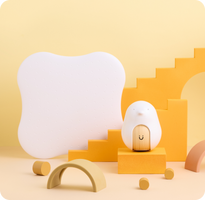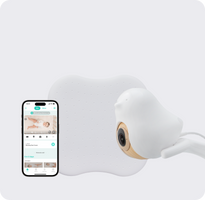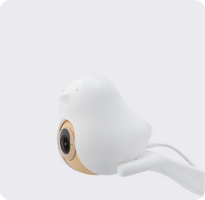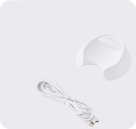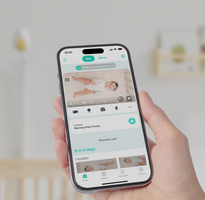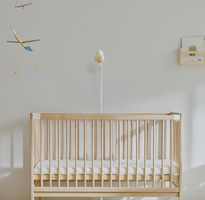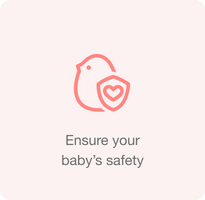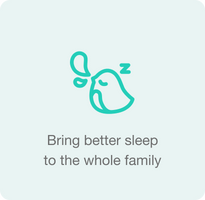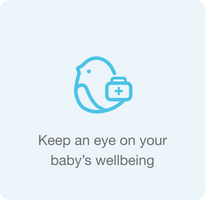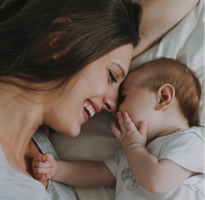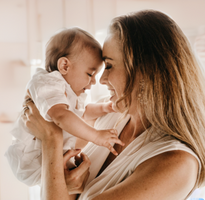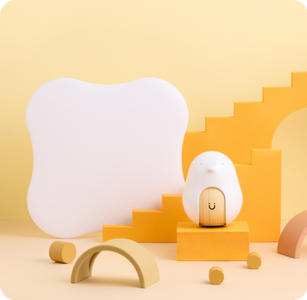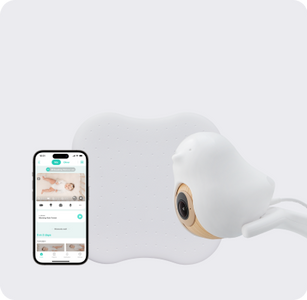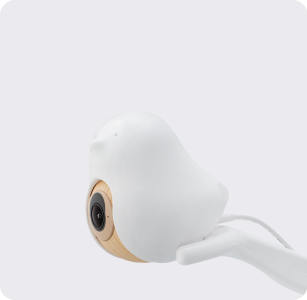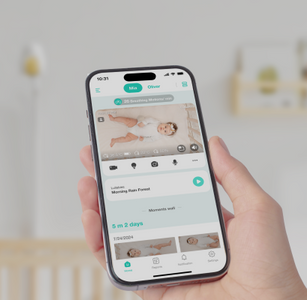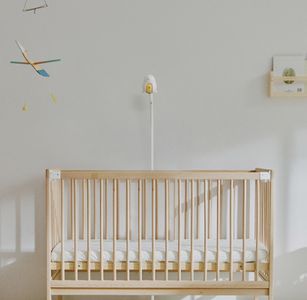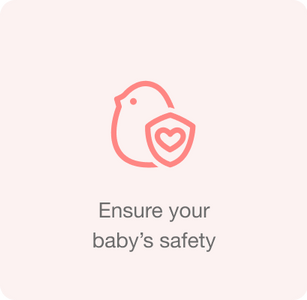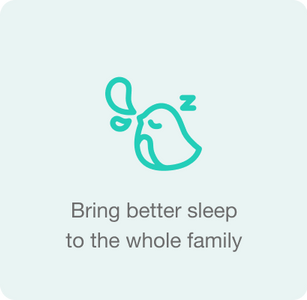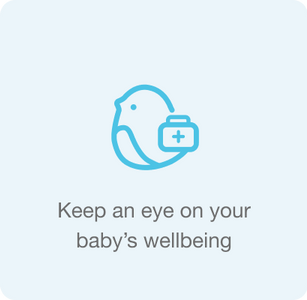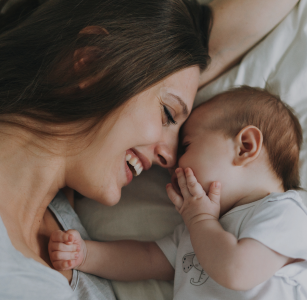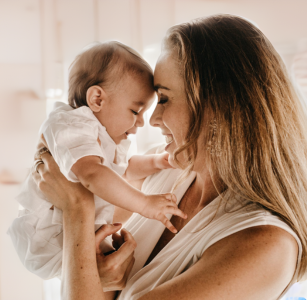What causes SIDS? Plus, How to Create a Safe Sleep Environment for Baby
Waking up every hour to check on your newborn? An experienced dad tells you how to reduce the risk of SIDS. Learn how to create a safe sleep environment to get a blissful night’s sleep for you and your baby.
SIDS (Sudden Infant Death Syndrome) is every parent's worst nightmare. As a dad, I remember not being able to sleep the first couple months after my daughter, Arielle, was born. I'd wake up every hour to make sure she wasn't on her stomach. I was a Mama Grizzly, poking my snout close to Ari’s nose, obsessively seeking confirmation she was in fact breathing.
Was I terrified? You bet I was! It was frickin' scary.
But the truth is, you don’t have to be terrified by SIDS. In fact, you can sleep soundly by doing a handful of things that will create a safe sleep environment for your baby.
Learning what causes SIDS and how to create a safe sleep environment for your baby is a simple way to get a blissful night’s sleep. Or at least a few extra hours, in between feedings!
What is SIDS?
Sudden Infant Death Syndrome usually occurs during sleep. You may have also heard it referred to as “crib death” as it most commonly occurs in the crib.
Unfortunately, there are no warning signs. Sleeping infants offer no cues or clues that they are in danger from succumbing to SIDS.
Despite recent advances in preventing SIDS, new parents still, for the most part, obsess about their infant sleeping soundly through the night.
What is the most commons SIDS age?
SIDS usually occurs in babies less than 12 months old.

How common is SIDS?
If you’re a first-time parent, your mind may be swirling with all the possibilities of what causes SIDS and you may be tempted to watch your baby sleep all night just as I did. You’re no doubt willing to sacrifice your own well-being in order to make sure your child sleeps soundly through the night.
But guess what chance your baby has of succumbing to SIDS? It’s good news. An approximately 0.000875% chance (that’s less than one one-thousandth of a percent).
What causes SIDS?
According to the Mayo Clinic, SIDS is an unexplained death. However, researchers believe there may be some underlying physical factors as to what causes SIDS, for example:
-
Respiratory infection - Be vigilant if your baby has a cold or has recently had one. That’s because a significant percentage of SIDS deaths are cold-related. Breathing problems may be the culprit.
-
Premature birth - If your baby was born at a low birth weight, he or she may lack a fully-developed, natural, automatic breathing ability.
- Brain defects - A seemingly healthy baby may have underlying problems in the part of the brain controlling the breathing processes.
How to Create Safe Sleep Environment For Baby

By making sure you take steps to provide a safe sleep for baby, you hopefully won’t be a nervous wreck like I was after my daughter was born. Preventing SIDS, or at least reducing the risks, can be done by following recommendations by the American Academy of Pediatrics:
-
Safe sleep for baby means making sure your newborn is sleeping on their back, never on stomach or side. Use a smart baby monitor to help keep an eye out. The Cubo AI Baby Monitor, has built in AI to alert you if your baby's mouth and nose is covered. The app also alerts you in real-time if your baby is stuck when trying to roll over.
-
To create a safe sleep environment, the pad of the crib or bassinet should be firm and covered with a tight-fitting sheet.
- Avoid crib bumpers, blankets, pillows and soft toys. To prevent potential suffocation events, your baby’s crib should have nothing in it. As tempting as it might be, do not place a stuffed animal or binkie in your baby’s crib or bassinet. If you’re looking to soothe and comfort baby, you can utilise the two-way talk feature on the Cubo AI Smart Baby Monitor and let your little one know you’re close by.
-
Baby should never sleep in your bed. While room sharing can reduce the risk of SIDS, it is not recommended that your little one shares the same bed. If you’re anxious about keeping an eye on baby, use a smart baby monitor to help you keep watch. The Cubo AI Smart Baby Monitor has amazingly clear 1080p HD night vision, making those late night check-ins even easier and less of a disturbance.
-
Avoid covering your baby with blankets. If it’s really cold in the bedroom, use a sleep sack or thick onesie. Your baby should be cozy warm, but not overheated. If your baby keeps fidgeting during regular nap/sleeping times, you may need to adjust the temperature or the clothing.
You can keep an eye on your baby's safe sleep environment, with a smart baby monitor like Cubo AI. This cute little monitor sends temperature and humidity alerts, to help you make sure your little one is neither too hot or too cold!
Reduce the Risk of SIDS: Conclusion
Reading through these tips, hopefully you feel much more at ease. Because of improved safety regulations, as well as increased awareness and advances in smart baby monitor technology, you can sleep soundly at night knowing the risk of SIDS is minute.
Judd H.
Cubo Dad


